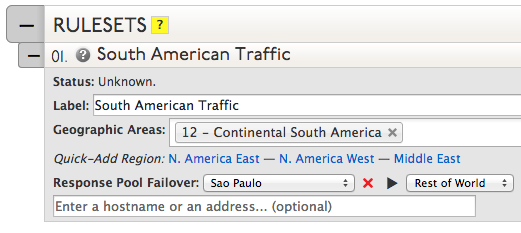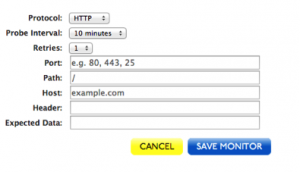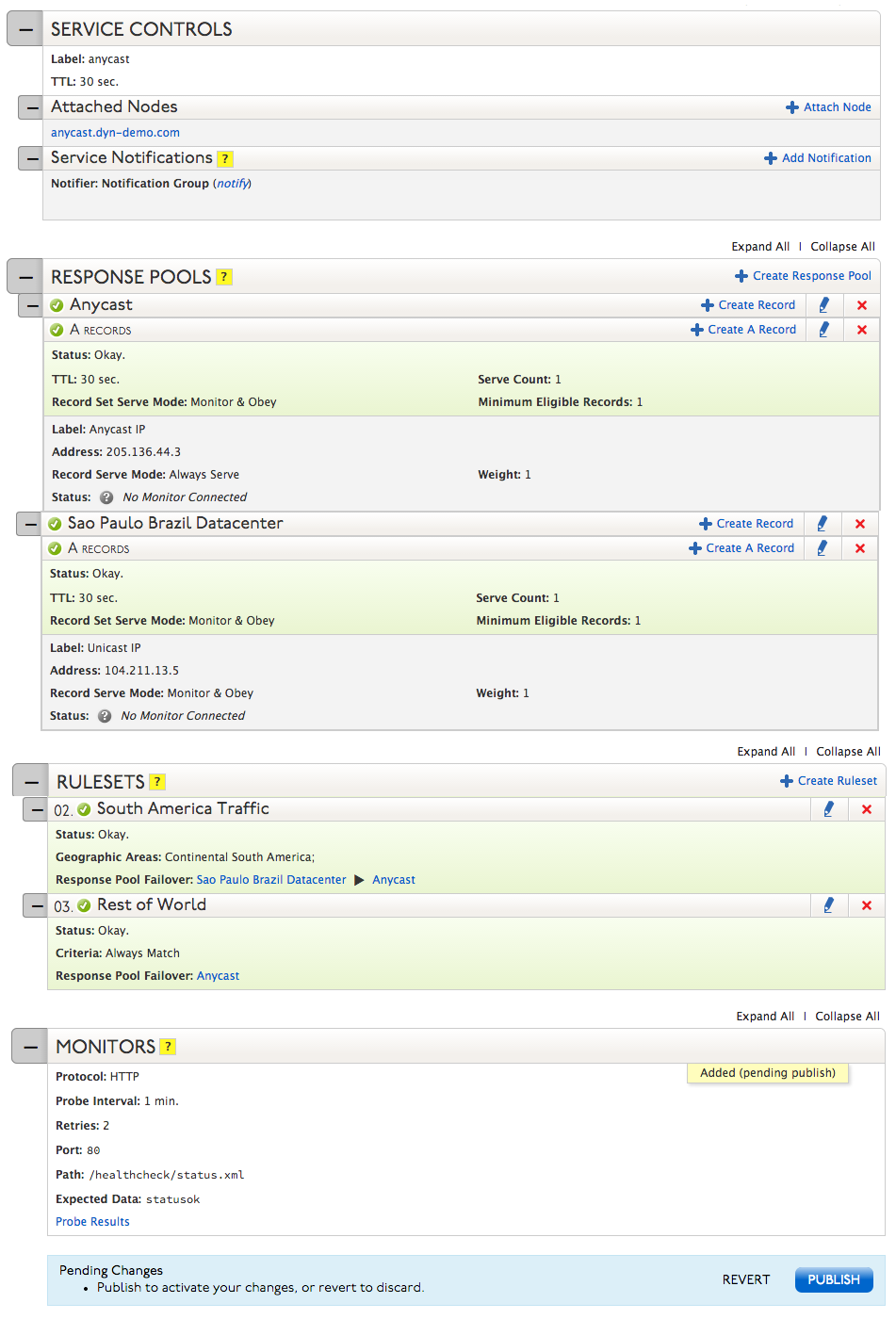If you are a company that anycasts their service or product from various data centers throughout the world, you may run into regional routing problems. You can configure Traffic Director to route traffic correctly in specific regions.
EXAMPLE: You produce and maintain a web application that serves content worldwide via various data centers. You notice that a large portion of your South American users are being routed to your data center in the United States instead of your data center in Sao Paulo, Brazil. You can use Traffic Director to ensure that your South American users connect to your Sau Paulo data center for optimum performance of your application.
In this article, we are going to set up two Response Pools, and their corresponding Rulesets, with Traffic Director to do exactly this.
| 1. Log into your Dyn Managed DNS account. | |
| 2. Click Manage beside the zone you wish to add the Traffic Director service. | |
| 3. Select Traffic Director from the Add a New Service drop-down menu. |  |
| 4. Enter a label and click Create Service. This will help you identify this specific instance of Traffic Director in your zone. |  |
| 5. Under Service Controls, you can alter the default Time To Live (TTL) for this instance of Traffic Director or edit the label you created in the prior step.
Additionally, you can attach more nodes (zones or cut zones) to this specific instance of Traffic Director and be alerted of any changes to this configuration by adding a notifier in the Service Notifications section. |
 |
| 6. Next, we will be creating two Response Pools: one for your Sao Paulo data center and another for your the rest of your global traffic.
Click Create Response Pool under the Response Pools menu and enter Sao Paulo as the label. |
|
| 7. Click Create Record under your newly created Response Pool and then select A from the drop-down menu. Enter in your Sao Paulo data center’s IP address into the Address field.
Note: If you have multiple servers in your data center, you can add them to the Response Pool by adding additional records to the Response Pool, labeling them (using the Label field) and load balancing them accordingly using the Weight function.
|
 |
| 8. Repeat steps 6 and 7 to create a Response Pool called Anycast for the rest of your traffic. | |
| 9. Once the Response Pools have been created, we will need to define two Rulesets: one for your South American traffic and one for the rest of your traffic.
Click Create Ruleset and enter a label, South American Traffic. This Ruleset will serve the record(s) from your Sao Paulo Response Pool to your South American users.In the Geographic Areas field, select Continental South America. Beside Response Pool Failover, select your primary Response Pool for this Ruleset, in this case, Sao Paulo Data Center. A new drop-down menu will appear beside the Response Pool you just set. If needed, you can set a failover Response Pool (Anycast) in the second drop-down menu in the case that your primary pool goes down. This is called a Failover Chain. |
 |
| 10. Create a second Ruleset called Rest of World, and leave the Geographic Areas field blank and set the Response Pool Failover to Anycast. | |
| 11. If desired, you can set up a probe that will monitor the responsiveness of your node and will notify you if one of your nodes goes down.
Beside Monitors, click Create Monitor. Select a monitoring protocol (HTTP, HTTPS, PING, SMTP, or TCP), set the Probe Interval to the desired length of time between probes, the number of Retries before the probe officially considers the server down, and the fill out out the following fields as needed. Then select a Notifier from the Monitor Notifiers drop-down menu. |
 |
| 12. Once all conditions have been set and saved, click Publish. | |
Configuration Overview

